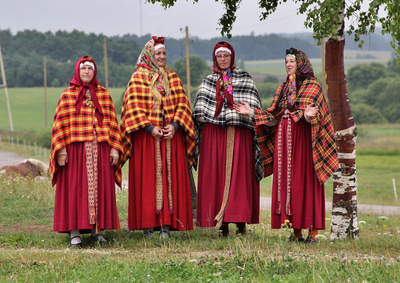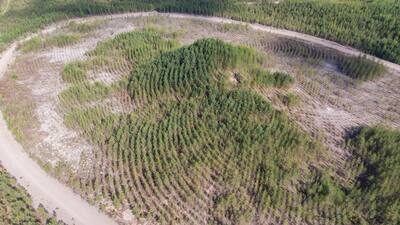News from Baltic Country Holidays
News from Baltic Country Holidays
From May 14 to 15, the team of the project "Change Creators. Innovative business models for the non-urban creative sectors" met in Kuldīga, Latvia. It was the third meeting of partners to discuss what has already been done in the project and what is still planned.
Suiti aicina uz suitu sadraudzības un erudīcijas spēli "Es mīlu Tevi, Suitija!" 3. maijā pl. 19:00 Alsungas kultūras namā. Aicināts ikviens, kas vēlas pavadīt vakaru interesantā un arī izglītojošā atmosfērā. Ieeja bez maksas.
"Jaunas zināšanas, jautrība, draudzība un nedaudz arī sacensību gars, lai piepilda šo satikšanos!"
Vairāk info: https://www.facebook.com/EKCsuiti
Biedrība “Ūdenszīmes” ir dibināta 2007. gada 20. jūnijā. Tās galvenie darbības virzieni ir vides aizsardzība un ilgtspējīga attīstība, pilsoniskās sabiedrības attīstība, māksla un kultūra, bērnu un jauniešu izglītība un attīstība. Savu darbību biedrība uzsāka ar vēlmi darboties tieši lauku apvidū - Sēlijā, kas ir ļoti attālināts no lielajām pilsētām. Reģionā, kas ir bagāts ar dabas vērtībām, kultūrvēsturisko mantojumu un sirsnīgiem un apņēmīgiem cilvēkiem. Paralēli biedrības dibināšanai tika uzsākta arī piemērotu telpu meklēšana reģionā. Tika apskatītas dažādas ēkas, taču īstā izrādījās 2003. gadā slēgtā Kaldabruņas skola. Biedrības biedru vidū ir pedagogi, vides aizsardzības, finansu un projektu menedžmenta speciālisti, mākslinieki, lauksaimnieki, tūrisma gidi, pensionāri – gan no reģiona iedzīvotāju vidus, gan citām vietām Latvijā.
Suiti ir viena no krāšņākajām un savdabīgākajām kultūras tradīcijām bagātākajām kopienām ne tikai Kurzemē, bet arī visā Latvijā. Kā apliecinājums tam ir 2009. gada 1. oktobrī Suitu kultūrtelpas iekļaušana UNESCO Pasaules Nemateriālās kultūras mantojuma sarakstā, kam nepieciešama neatliekama glābšana. Suitu kultūrtelpa ir iekļauta arī Latvijas Kultūras kanonu tautas tradīciju sarakstā. Izpausmes, kas raksturo suitu nemateriālās kultūras mantojumu, ir tradicionālie svētki, tautas parašas, mutvārdu tradīcija, tradicionālās dziedāšanas un muzicēšanas prasmes, tradicionālā tautas tērpa darināšana un ēdiena gatavošanas tradīcijas.
Aicinām piedalīties pasākumā, kas iezīmēs jaunu pavērsienu Baltijas sidra attīstībā. Trīs dienu programma piedāvā jaunas zināšanas profesionāļiem un sidra svētkus visiem. Apmācību (klātienē) vadīs Gabe Cook, neatkarīgs pasaules mēroga sidra eksperts no Apvienotās Karalistes, ar 15 gadu pieredzi, sidra zinātāju pasaulē pazīstams kā “Sidrologs” www.theciderologist.com; IG @ciderlogist.
Programmā:
- 23. maijs, 2024 / bārs "Sidrērija", Peldu iela 24, Rīga / Apmācības: Sertifikāts “Sidra Zinātājs / Cider Guide”.
- 24. maijs, 2024 / bārs "Sidrērija", Peldu iela 24, Rīga / Darbseminārs Zīmols “Baltijas Sidrs”.
- 25. maijs, 2024 / Kalnciema kvartāls, Kalnciema iela 35, Rīga / Sidra tirgus.
>>> Pilna pasākuma programma un sīkāka informācija (Latviski, PDF)
>>> Full event program and more details (English, PDF)
Aicināti piedalīties sidrdari, bārmeņi, dzērienu someljē/pomeljē, dzērienu pārdevēji vairumtirdzniecībā un mazumtirdzniecībā, dzērienu eksportētāji, viesmīlības nozares pārstāvji, sidra entuziasti un interesenti.
Registrācija līdz 25. aprīlim: https://forms.gle/uNaCL1MLdhi7VBa27.
Informācija par pieteikšanos un dalību pasākumos: anna@celotajs.lv; +371 22495916.
On behalf of Latvia Travel and Baltic Nature Tourism, we are delighted to invite you to a product presentation seminar and a networking reception at the Latvian Embassy in London on Thursday 18th April 2024. Come and hear the latest news and tourism developments from Latvia and the Baltic States as well as meeting Latvian nature tourism suppliers joining us for the afternoon. Now, with additional flights to Riga, there has never been a better time to promote one of the most beautiful and natural destinations in Europe, Engage in discussions with Latvian partners along with drinks and authentic snacks including some Latvian specialities!
18 Apr 2024, 15:00 – 17:30
Embassy of the Republic of Latvia, 45 Nottingham Pl, London W1U 5LY, UK
>>> Program (PDF)
>>> Presentation (PDF - Asnāte Ziemele, Lauku ceļotājs)
Latvian and Estonian nature and active tourism entrepreneurs will go to Finland on a study trip from April 25-28.
>>> Program (PDF)
Program by Anneli Kana (Estonian Rural Tourism association / tourism enterpreneur, guide)
annelikana@gmail.com
phone +372 5288810 (Estonian), +358466560528 (Finnish)
As part of the "Change creators" project, Anders Lindgren, an expert from Sweden, visited the association "Ethnic Culture Center "Suiti"" in Kurzeme in March. He got to know Alsunga and gained a better understanding of the association's activities. The expert also prepared a workshop for children to try to better understand how to involve them in the activities of Suiti. Some valuable ideas and conclusions were drawn from this collaboration.
On March 11 and 12, the Baltic Nature Tourism project team from Latvia and Estonia met for a spring meeting in Tallinn.
Baltic Nature Tourism's platform balticnaturetourism.com, created last year, currently unites more than 100 entrepreneurs in Latvia and Estonia. Its purpose is to provide a starting point for nature tourism entrepreneurs in Latvia and Estonia to reach the UK market. Baltic Nature Tourism is not a reservation system, but an online platform where it is easy for travelers and tour operators to find the offer they are interested in and communicate directly with entrepreneurs by making a reservation without an intermediary.
During the meeting, we looked back at the work done so far and together we planned the upcoming activities.
>>> Presentaion (Asnate Ziemele, Lauku celotajs, Latvia)
>>> Presentation (Anna Saļņikova, Lauku celotajs, Latvia)
>>> Presentation (Andy Fairburn & Paul Wagner, Nordic Tourism Collective, UK)
>>> Photo gallery
>>> Meeting minutes
As part of the "Change creators" project, Agnieszka Dadak, an expert from Poland, visited the association "Watermarks" in Selonia in March. She got to know both Kaldabruņa village and the Selonia region as a whole, meeting people from the association "The Islands of Selonia" as well. This gave her the opportunity to help with ideas on how to attract foreign tourist groups and with a perspective on how to include the local Červonka church in the tourism offer.











